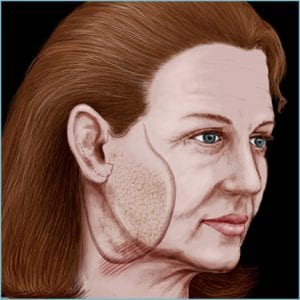The Center for Cosmetic Surgery
725 Heritage Road #100
Golden, CO 80401
Phone: (303) 278-2600
Monday – Friday: 8 a.m.–5 p.m.
The Center for Cosmetic Surgery
755 Heritage Road #100
Golden, CO 80401
Phone: (303) 279-6100
Monday – Friday: 8 a.m.–5 p.m.
The Center for Cosmetic Surgery
501 South Cherry Street #900
Denver, CO 80246
Phone: (303) 951-2100
Monday – Friday: 8 a.m.–5 p.m.
The Center for Cosmetic Surgery
501 South Cherry Street #900
Denver, CO 80246
Phone: (303) 951-2102
Monday – Friday: 8 a.m.–5 p.m.
The Center for Cosmetic Surgery
6985 Tutt Blvd Ste 110
Colorado Springs, CO 80923
Phone: (719) 380-1823
Monday – Friday: 9 a.m.–5 p.m.
Step 4: Understanding The Layers
- Step 1: Facelift Surgery Goals
- Step 2: Making the Incision
- Step 3: Creating a Pocket
- Step 4: Understanding the Layers
- Step 5: Trimming and Tightening
- Step 6: Improving Jaw Definition
- Step 7: Firming the Neck
- Step 8: Removing Extra Skin
- Step 9: Placing Fine Sutures
- Step 10: The Final Result

Tightening the underlying tissue is the next step during facelift surgery. Our board-certified plastic surgeons explain to patients during the facelift consultation in Denver, Colorado, that this tissue supports the face and it’s often misrepresented as muscle. We all use facial muscles to either chew or to create facial expressions. Plastic surgeons don’t cut or sew facial muscles during a facelift. So, what supports your face? It’s a layer between the muscles and the skin called the SMAS (superficial musculo-aponeurotic system), a strong, globular layer shown in the illustration within the pocket of the face. In the neck, the SMAS connects to the platysma muscle, which the illustration shows as lines. Our surgeons expose the underlying SMAS layer up to within a few centimeters of the nasolabial folds, jowls, and marionette lines. In the neck, the pocket extends over the edge of the platysma muscle.
Mini-Facelift vs. Traditional Facelift
The pocket in a traditional facelift extends over the jowls and around the neck, connecting to the opposite side of the face. This exposes a larger area of SMAS, and the traditional technique usually adds an incision beneath the chin to allow for this larger area of skin separation and underlying tissue exposure. This more extensive pocket, however, adds no surgical advantage for most patients in achieving long-lasting, natural facial rejuvenation. In fact, it may increase surgical risk and recovery time.
Step 5: Trimming and TighteningMaking your cosmetic goals a reality is easier than ever with our flexible financing options:
LEARN MORE ABOUT FINANCING OPTIONS
